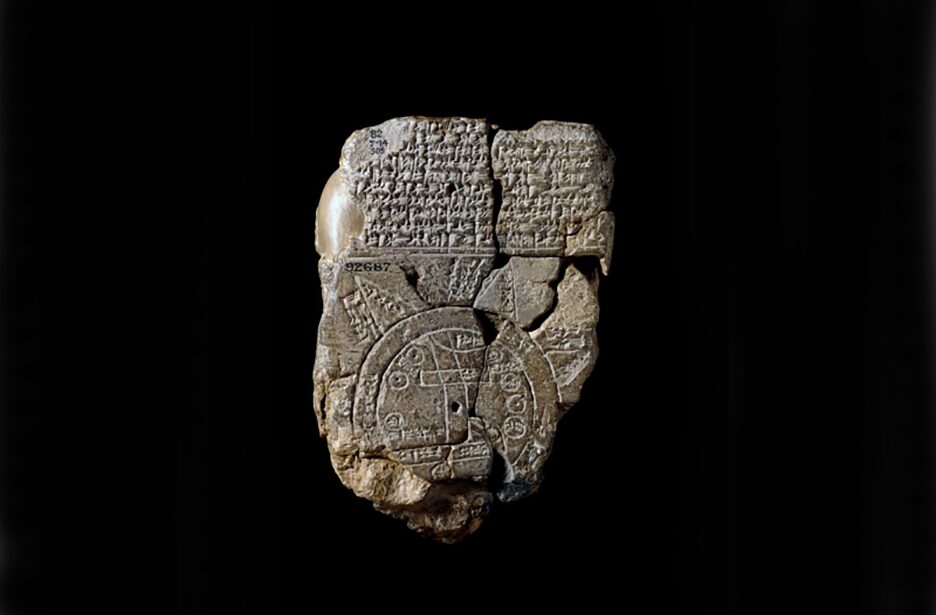Researchers think they have found a depiction of Noah’s Ark on the 3,000-year-old Babylonian Map of the World. Also known as the Imago Mundi, the clay tablet has baffled archaeologists for over a century.
Archaeologist Hormuzd Rassam discovered the tablet in 1882 in Sippar, an ancient Babylonian city in present-day Iraq. It now lies in the British Museum, and researchers finally think they have decoded it. Curator Irving Finkel says that the cuneiform writing on the tablet tells of the ancient Babylonians’ beliefs and culture.
The tiny tablet has cuneiform on both sides and a map of sorts etched into it. The writing above the map tells of the creation of the Earth, and the map itself seems to give an aerial view of Mesopotamia.
On the tablet, Mesopotamia is surrounded by a double circle that is labeled the “Bitter River.” At the time of creation, this was considered the boundary of the known world. Within Mesopotamia, clear markings depict the Euphrates River, Babylon, and other features.
“In this circular diagram, you have captured the entirety of the known world, where people lived, thrived, and perished,” said Finkel.
Triangles outside the double ring represent distant mountains and realms beyond that of the known world.
Mysterious triangles
The back of the tablet is covered in cuneiform, which speaks of what lies within the eight triangles that sit outside the double circle. Here, the information slips between reality and imagination. Those creating it did not know exactly what lay beyond Mesopotamia. The stories tell of giant birds and trees with jewels hanging from them instead of fruit.
Researchers think the back acts as a guide to unknown lands for any explorer who is considering a journey beyond the Bitter River. A story about one of the mysterious realms shows a striking resemblance to the biblical tale of Noah’s Ark. It says that the explorer must pass through “seven leagues…[to] see something thick as a parsiktu-vessel.”
The word parsiktu was of immediate interest to Finkel. He says this word would make any Assyriologist’s ears prick up. It is only seen on one other cuneiform tablet, which describes an ark built by the ancient Babylonian version of Noah. The Ark eventually crashes on the other side of a mountain beyond the Bitter River.
Finkel believes the Imago Mundi tells adventurers the journey they must take to find Noah’s Ark and gives us an incredible insight into the crossover of ancient stories and cultures.
“It shows that…from the Babylonian point of view, this was a matter of fact…That if you did go on this journey, you would see the remnants of this historic boat,” he says.






